2018 USA Water Polo Junior Olympics: Day Two: Water Polo Christmas
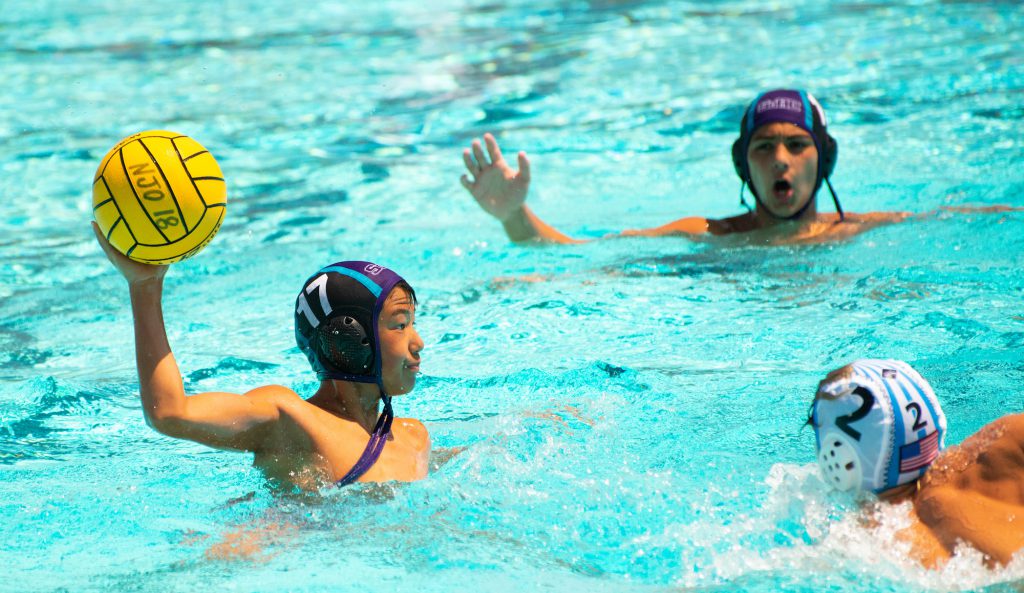
By Michael Randazzo, Swimming World Correspondent
Editor’s Note: Swimming World is on the ground all week with stories and quotes from the 2018 USA Water Polo National Junior Olympics. Look for our coverage of the largest youth water polo tournament in the world. If you want to tune into all the action at Stanford’s Avery Aquatics Center, check out FloSwimming’s link to the tournament; for pictures from various JO sites, visit this link for KLC photos.
SAN JOSE, CA. Day Two of the 2018 USA Water Polo National Junior Olympics saw your correspondent parked Sunday at the Valley Christian High School, beautifully nestled in the hills of San Jose. Given the hundreds of matches going on at the same time in dozens of pools in and around San Jose, it’s a mental stretch to grasp just how vast this activity is.

Breaking this down, at Valley Christian there were fourteen 14U matches in the Boys’ Invitational and fourteen for 16U players in the Boys’ Championship bracket. Play started just after first light, with the last goal scored at 8 p.m.—little before sundown.
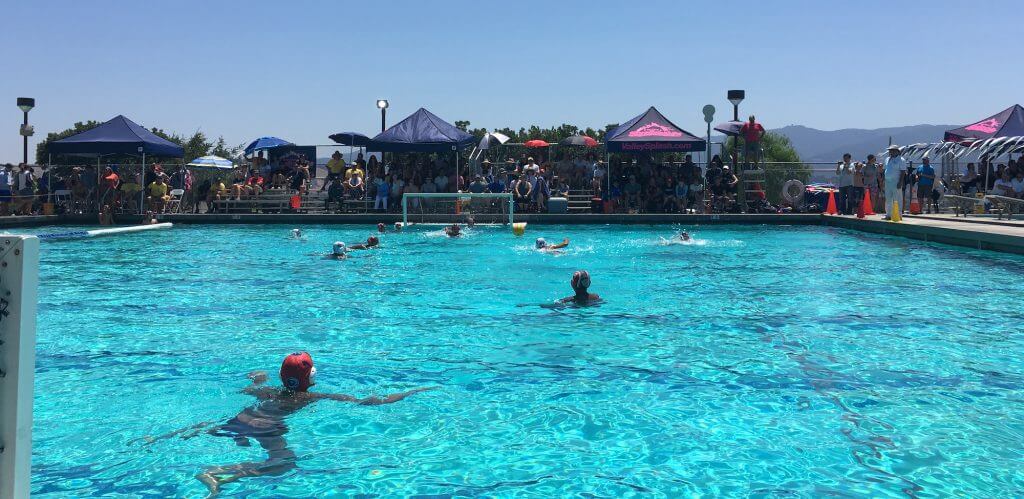
Photo Courtesy: M.Randazzo
Also at Valley Christian pool was the Davis 16U team from Davis, California, striving to advance in the top (Championship) bracket. Among the spectators was Steve Doten, Commissioner for the Western Water Polo Association (WWPA), whose son Trey is on the Davis 16U squad.
Doten is as engaged with American polo as anyone in the country. He was a player at Cal, a coach at UC Davis and now is overseeing all operations at the WWPA, which includes eight men’s and eight women’s teams from NCAA Division II schools.
On a beautiful morning, Swimming World got to watch Doten’s son Trey play under the brilliant California sun and talk JOs.
– What should a newcomer to the JOs look for?
It’s like “Water Polo Christmas!” It’s so much fun—the spectacle, the festival. you want your kid to be passionate about water polo? Take him to Stanford, the merchant village, the big ball.
I remember in 2012, sitting in the [stands at] Stanford, watching all those game going on and on the Jumbotron the Olympics were going on.
That’s what JOs is. All the teams from across the country—you just have to enjoy it all. Buy the gear and have a lot of fun.
– It’s a distinctly American experience. I know of HaBa WaBa in Europe and Canada, but the vast scale of this event is almost hard to imagine. It’s the best of American water polo.
I’m limited when it comes to international [play], but I’ve been told that JOs is the biggest tournament in the world. And what a great job USA Water Polo does—and Stanford University for hosting JOs.
Davis is a little like [your team from Brooklyn]; kids playing in their pool in their region. They need to get out and see how many kids are playing the sport, who these kids are. It’s such a learning experience on the national level. you just have to get out of your little community and see it.
It’s awesome from that point in terms of young people—they can participate with all the kids from around the country.
– JOs also underscores that water polo remains tethered to its home base of California. Can it move out from the West Coast into other parts of the country?
My first year at Davis, 2001, Michigan hosted the Junior Olympics. For us, to go out to Michigan, what a wonderful educational experience. And they did a fantastic job [out there]. I went to Michigan State for the first time to see their campus.
I think you can bottle [JOs] and take it. However, the California programs can get so much water polo at such a low cost and at a convenient distance that participation would drop off because of travel. You’d still get a good number of high-level teams but you’d likely lose the Big Valleys or the AMPs from Merced. And that’s what USA Water Polo realized.
When you host [in California] everything gets filled up. You go [out of state] the participation drops down [dramatically].
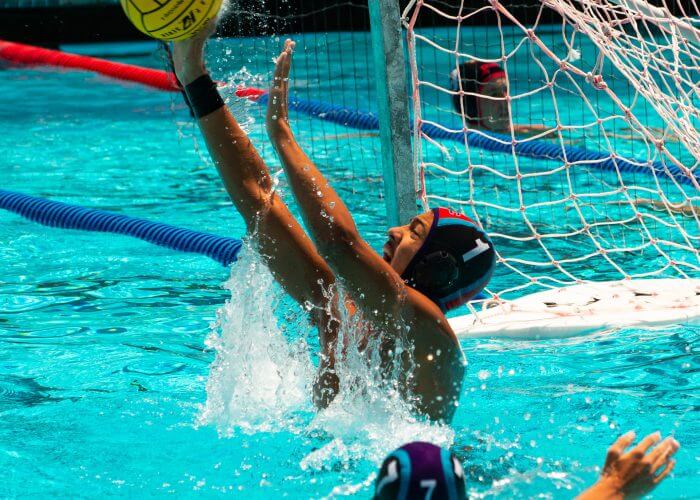
SoAC’s Milo Beausoleil. Photo Courtesy: Scott Dickson
– It’s a conundrum; the sport needs to grow outside of California but it is the best area (so far) to nurture a sport that apparently is on the rise.
it comes back to the National League now, that derivative of a semi-pro [water polo league]. Years ago, it was the Premier League, which I was involved with as a coach. Hearing the great Mike Schofield talk—UC Davis is the farthest north of all the California schools. We’re here—we’re not in Brooklyn—and we’re not Navy water polo.
Schofield would say that they’re going across the country every time. And I understood because it was hard just to get my kids to go to Southern California.
That’s been the age-old question: you’ve got to build it to be a national sport but not everyone can travel to get here. I like to think it’s a “Build it and they will come” idea—have teams from all over and build passion for polo.
It’s got to help but I’ve never seen the economics of this, and that’s the struggle. Do you take JOs elsewhere and lose some money? And can you overcome the cultural [barriers] because of the beach / water culture in California.
– This is where Texas may be the great solution, as both coasts can meet in the middle of the country. Your thoughts about polo’s growth in the Lone Star State.
I love the Viper Pigeons [Houston age group water polo club]. They want the gear, and it’s creative and fun! It’s like World Cup; the hair-dos and the looks and the festival. I think JOs has to do that, make it fun for the kids, and fly your colors.
Texas has the warm weather—I don’t know how many facilities they have—but it’s a prime location that you can grow the sport. There’s already real strong age group clubs, and the richest two universities in the country—University of Texas at Austin and Texas A&M—with over $200 million athletic programs. They could build an indoor swimming pool if they wanted to.
It’s also a football [culture], so boys are steered towards football. You’ve got to get them into water polo.
It’s right on for going to Texas for water polo. Maybe it’s every five years you have JOs outside of California, not every other year. Because, education is experiential; if I can show my kids New York—just like you come out here—if you come out for four days, I’m going to stay for another four days to see all the hot spots.
It’s why colleges go overseas to play or you take a team out to Princeton—you can show kids so much through sports, including different parts of the country.
When I went to the East Coast it was to Navy for a pool and a tournament. I didn’t go a lot of places because there’s no water polo there. I’ve never been to Yellowstone, I’ve never gone to Mount Rushmore or to the Grand Canyon; I spent my summers going to costal California.
The soccer and baseball kids, they’re didn’t go travel to these scenic places either.
– You’ve got a couple of kids who play water polo, and you’re 6-5; could football have ever been in their future?
My son [did] baseball, soccer, basketball, water polo, swimming. He played all those sports but not football. It’s not worth the potential brain injuries. It was a conscious decision and my wife agreed, and that’s why we feel very lucking about water polo. It’s swimming—and that’s another sport—plus a ball, a strategy. And it’s a lot safer for the kids.
My understanding is there’s been a decline in youth football in California. At Davis, it’s a huge problem trying to recruit kids to come to the football team. [Schools in the Bay Area] have fielded teams because they don’t have enough participation, so I know it’s declined there.
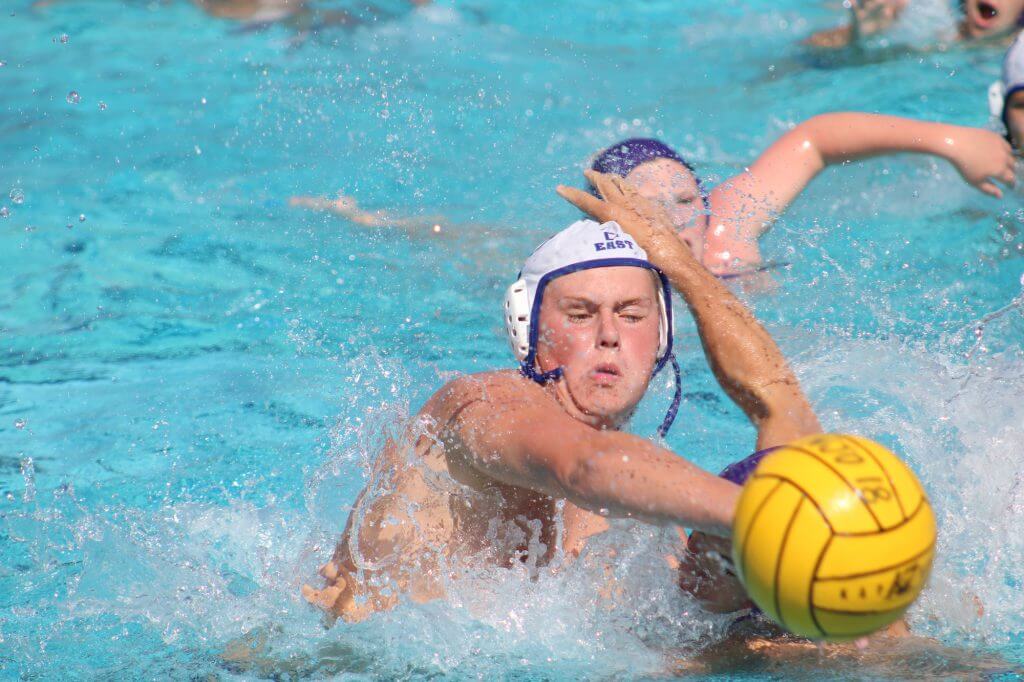
Photo Courtesy: Wendy Chastain
I don’t know if it’s reciprocal that it’s led to an increase in water polo. We know that it’s possible to get concussions in water polo as well.
The other interesting thing is grass-roots to get more kids playing or to get more universities playing. There’s more opportunities for women, it’s not just the Pac-12 schools. You have Michigan, Indiana; if we can get these universities like Long Island to start a program, that could be a pathway to these great institutions.
– There’s the recent news that Indiana University’s women’s water polo team will join the MPSF. Is this another step in the right direction to expand polo out of its California footprint?
We’re helping Salem [University] restart their program, bringing them into the WWPA, which will make four teams in the East and four in the West. We’re hoping to have a positive bi-costal experience for our athletes. From that standpoint, I can see [why] Indiana would give their athletes an opportunity to play top schools on the West Coast.
The Big 10 is like the Pac 12 in terms of funding. I like the thinking and that idea that you can do this and stimulate growth… maybe it’s working as Long Island and some of these other schools start programs.
I do encourage [WWPA members] to go to Brown, and Harvard and Princeton—travel and see the world through sports.
It’s going to be a pretty tough [road ahead] for Indiana playing those five schools.
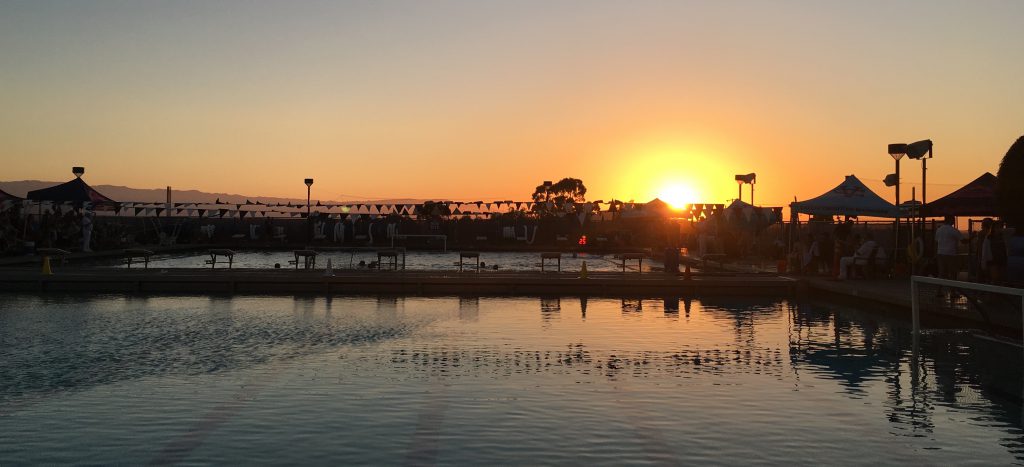
Photo Courtesy: M. Randazzo
– How does the JO experience whet your son’s appetite to continue playing in college?
Teaching Trey or trying to tell him is hard but when you bring him here he can see for himself. He’s played against regional high schools, so when he can get out of that small sphere and see things on a national level—and how big he is compared to his teammates.
It’s a great learning opportunity because he sees the CCD’s and Socals [where] guys are 16 and they’re 6-4.
It gives perspective about where your abilities are. Trey works hard and very much wants to play college water polo. So, they will test him and he sees the competition that makes him work harder.
So, there’s huge learning just from his vantage point. I can tell him: Trey, you’re not working hard enough, and then he plays Pride and gets beat 25-0—and I don’t have to say anything to him.
They’re a big, athletic, talented, well-coached team with lots of opportunities to play water polo.
They’re having fun but it’s so educational. From our little town in Davis, CA to your community in Brooklyn—they can see it. If you look at Wolf Wigo, he didn’t grow up in California. So, the JOs can really inspire kids from all over the country that this is what they want to do.




Daren Ham